Summer School 2009
Our first summer school was held June 5-21, 2009 on the topic of Taphonomy.
It was divided between a week in southern Germany and a week in Berlin. Because four of the five Ph.D.-students on the German side are non-German citizens and two Chilean exchange students also joined the trip, a multinational group of students - together with their German and Chinese teachers - studied the world-famous outcrops of the south German Jurassic, including the famous fossil "Lagerstätten" of Solnhofen and Eichstätt. Aside from the obligatory visits to the excellent museums of the region, we had ample time to study the fossil taphonomy and depositional environments that enable us to obtain a detailed window into the past, similar to the Early and Middle Cambrian "Lagerstätten" of China, most notably Kaili and Chengjiang.
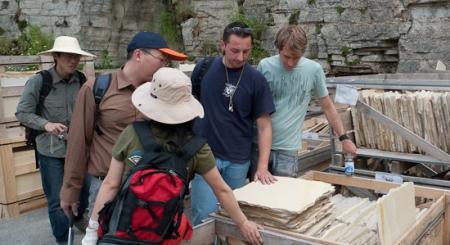
At the Maxberg quarry in Mörnsheim, Bavaria, the Plattenkalks of the thick bedded "Solnhofen facies" are exposed.
We collected fossils and hand samples from a wide range of carbonate depositional environments, representing a section through the maze of lagoonal mini-basins that graded southward into reef trends and the open sea.
Because this was the first visit to Europe for many of the Chinese Ph.D.-students (and indeed even the first trip outside China), an impromptu cultural program introduced Europeans and Chinese alike to the culture, kitchen, history and way-of-life of southern Germany.
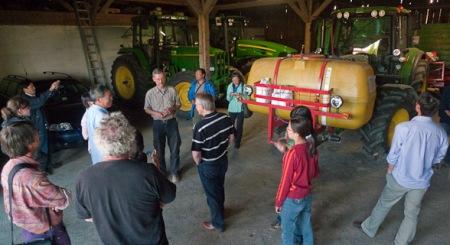
After the field work, other activities were held on most evenings to introduce the German way of life in an entertaining way. A visit to an almost fully automated farm was also a new experience for most of the European participants.
We returned to Berlin to match our field experience with a more systematic and traditional approach: During the following week, our group visited the collections of the Museum für Naturkunde and had a behind-the-scenes view of the research laboratories there.
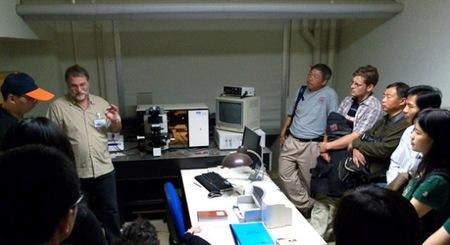
After visiting the collections of the Museum für Naturkunde in Berlin, we were given a very informative tour through its laboratories.
This was followed by a one-day classroom-and-laboratory session on taphonomy and a one-day review session on the preliminary results of our research in China. Moreover, we used the time to conduct research in small groups with our individual partners.
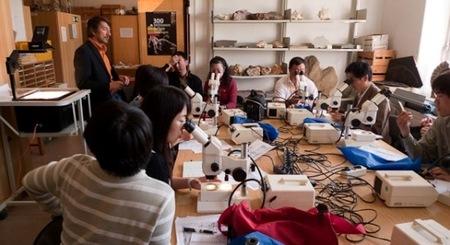
During a classroom session at the Freie Universität Berlin, thin sections of the visited outcrops were studied.
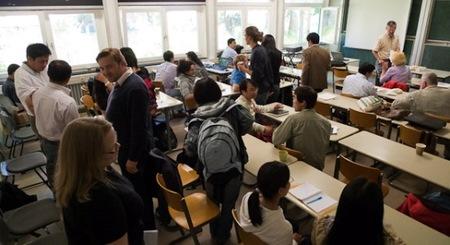
The seminar session at the Freie Universität Berlin in which preliminary results of our research project were presented, was well-attended.
All photos on this page: Q. Scouflaire